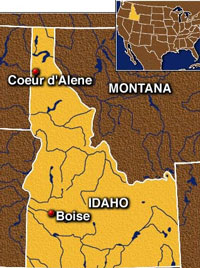The dramatic growth in biofuels made from crops is the runaway favorite for the year’s top stories in agriculture.
“Emergence of biofuels as a factor in the farm economy really came out in 2006,” says USDA chief economist Keith Collins in a USDA Radio News report. “As that became realised in the second half of 2006 we saw commodity markets just explode.”
Listen to USDA Report by Gary Crawford.  USDA Report (1 min MP3)
USDA Report (1 min MP3)
Brownfield Network ranked “growing demand during 2006 for crops that are increasingly used as sources of energy and that show promise for other uses” in the “2006 Ag Year in Review.”
According to ag columnist Jack Dillard of the Shreveport Times writes, “For 2006, the two biggest stories and happenings in agriculture were the surge toward ethanol and the drought. Both could continue into next year.”
Agricultural journalist Jim Suber’s column in the Topeka Capitol-Journal puts biofuels in the number one and two spots for top ag stories of the year.
1. The dawning of awareness by the urban public that ethanol exists as a fuel and not just for a bathtub purple passion drink to make you sick on New Year’s Eve. Add other biofuels to the list, and then research sugar and sugar cane and try to sort out that with ethanol and trade tariffs and corn production and corn subsidies and alcohol subsidies. It will take an hour, I promise.
2. The entire biofuels/ethanol complex of thinking along with the skyrocketing dollar influence of commodities funds by investors who wouldn’t know a bushel of peas from a tub of cottonseeds has perhaps built in a new price base for corn and oily crops like soybeans. Maybe.
And from the Twin Cities’ Pioneer Press we read “For American agriculture, 2006 was unquestionably the year of ethanol.”
Indeed it has been.


 The newest scratch ticket lottery game in Kansas is offering an E85 vehicle as a grand prize, according to a
The newest scratch ticket lottery game in Kansas is offering an E85 vehicle as a grand prize, according to a  The Idaho Legislature will be considering proposals in the coming new year to make ethanol and biodiesel more attractive to distributors in that state.
The Idaho Legislature will be considering proposals in the coming new year to make ethanol and biodiesel more attractive to distributors in that state. 2007 has been a pretty good year for
2007 has been a pretty good year for  By the end of the year, Iowa will have produced a record 1.5 billion gallons of ethanol, more than one quarter of all the ethanol produced in the nation this year.
By the end of the year, Iowa will have produced a record 1.5 billion gallons of ethanol, more than one quarter of all the ethanol produced in the nation this year. The friendly folks at the Ethanol Promotion and Information Council would like to wish everyone “Gallons of Good Tidings” for the holiday season and the new year.
The friendly folks at the Ethanol Promotion and Information Council would like to wish everyone “Gallons of Good Tidings” for the holiday season and the new year. One of two Florida ethanol plants planned by
One of two Florida ethanol plants planned by  Electronics retailer
Electronics retailer 
 Two Canadian companies,
Two Canadian companies,